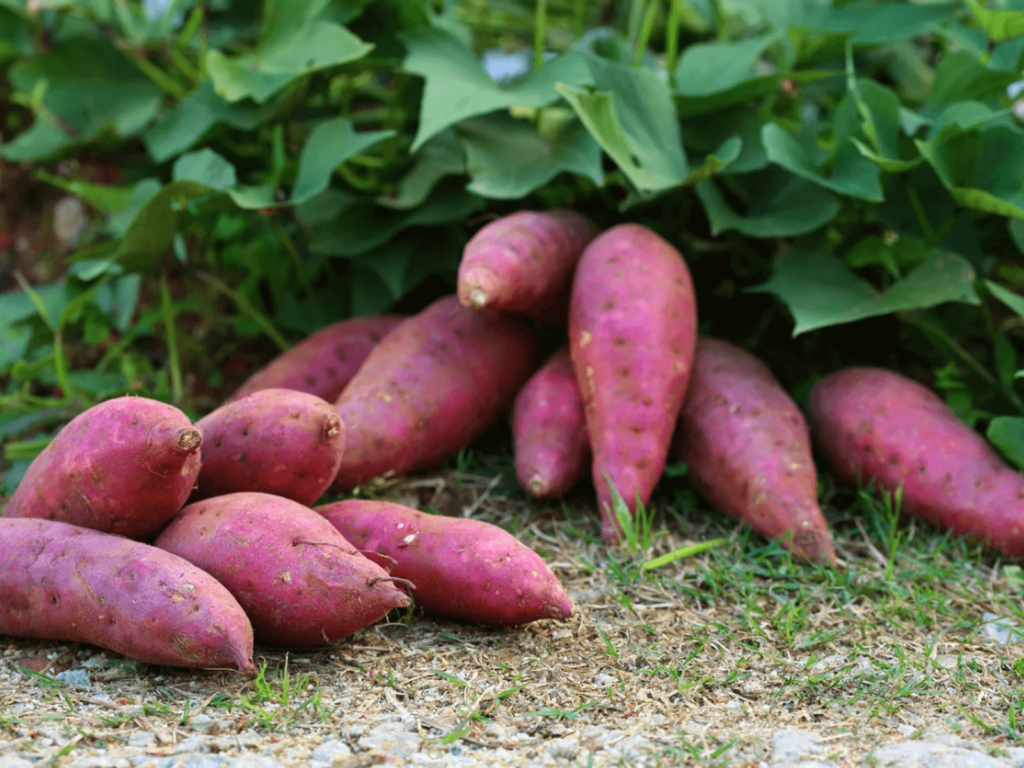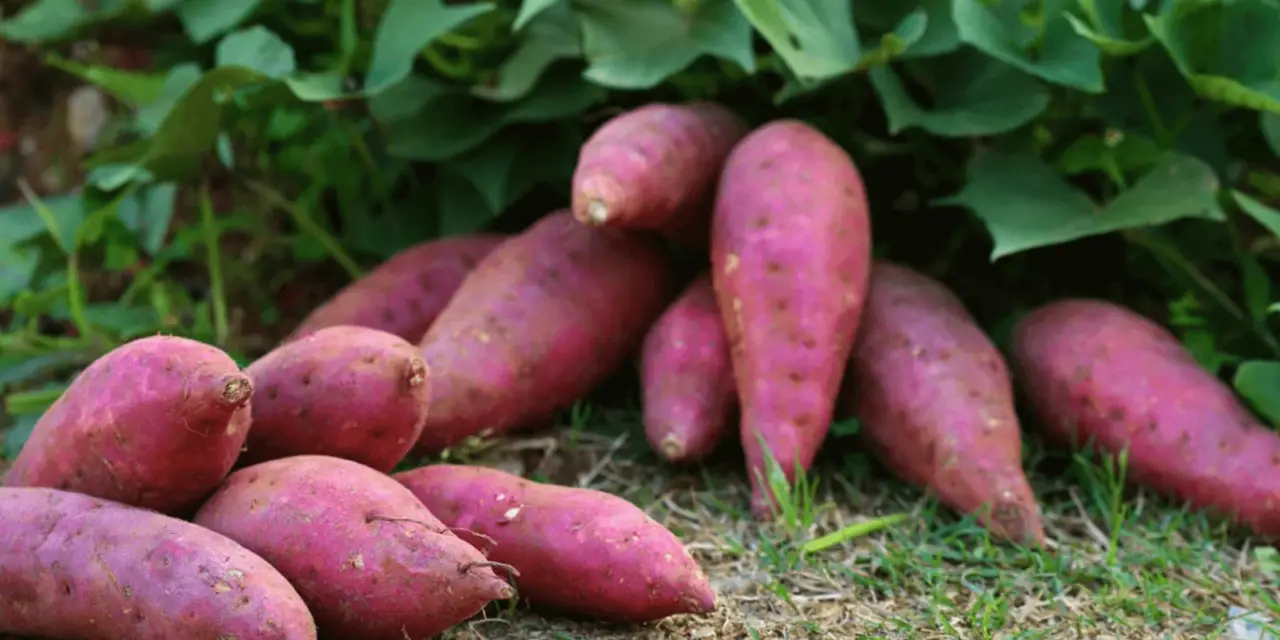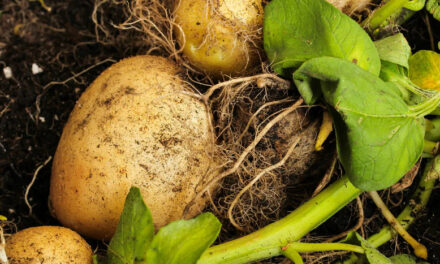Purple sweet potatoes, known scientifically as Ipomoea batatas, have grown in popularity due to their rich nutritional content, unique taste, and beautiful color. In this comprehensive guide, we will delve into the world of purple sweet potatoes, discussing their history, growth requirements, harvesting methods, care tips, common pests and diseases, and much more. Get ready to learn everything you need to know to successfully grow and enjoy these vibrant tubers in your own garden.

Purple sweet potatoes are native to South America and are believed to have been first cultivated over 5,000 years ago. They were brought to the Polynesian Islands by early settlers and became a staple crop throughout the region. It wasn't until the 20th century that purple sweet potatoes were introduced to the United States, where they initially gained popularity among Asian-American communities. Today, these colorful tubers can be found in grocery stores and farmers' markets worldwide, as well as in the gardens of those who appreciate their unique taste and appearance.
Why Grow Purple Sweet Potatoes?
There are several reasons to grow purple sweet potatoes in your garden:
- Nutritional benefits: Purple sweet potatoes are packed with antioxidants, vitamins, and minerals. They contain high levels of anthocyanins, which are responsible for their deep purple color and have been linked to various health benefits, including reduced risk of heart disease, cancer, and inflammation.
- Unique taste: Purple sweet potatoes have a distinct, slightly earthy taste that sets them apart from traditional orange-fleshed varieties. They can be used in both sweet and savory dishes, making them a versatile addition to your kitchen.
- Ornamental value: With their vibrant color and attractive foliage, purple sweet potatoes can be an eye-catching addition to your garden. They can be grown in traditional garden beds or in containers, adding visual interest to patios, decks, and balconies.
Choosing the Right Variety for Your Garden
There are several varieties of purple sweet potatoes, each with its own unique characteristics. Some popular options include:
- Okinawan: This variety originated in Japan and is known for its deep purple flesh, high sugar content, and creamy texture. It's an excellent choice for baking and making desserts.
- Stokes Purple: Stokes Purple sweet potatoes have a rich, earthy flavor and a denser texture than the Okinawan variety. They are well-suited for roasting and grilling and can be used in both sweet and savory dishes.
- Murasaki: Murasaki sweet potatoes have a lighter purple color and a slightly sweeter taste than other purple varieties. They are versatile and can be used in a wide range of recipes.
Before selecting a variety, consider factors such as your climate, growing space, and preferred uses in the kitchen.
How to Grow Purple Sweet Potatoes
Soil Preparation
Purple sweet potatoes thrive in well-draining, loamy soil with a pH between 5.5 and 6.5. Start by tilling the soil to a depth of 12
inches, removing any rocks or debris that may hinder root development. Amend the soil with organic matter, such as compost or well-rotted manure, to improve drainage, aeration, and nutrient content. If your soil is heavy clay or has poor drainage, consider planting purple sweet potatoes in raised beds or containers to prevent waterlogging, which can lead to rot and disease.
Planting
Purple sweet potatoes are typically grown from “slips,” which are small sprouts that grow from the eyes of mature sweet potatoes. You can either purchase slips from a nursery or propagate your own by placing a healthy, organic purple sweet potato in a jar of water, partially submerging it with the pointy end facing up. Within a few weeks, slips will begin to sprout from the eyes.
Once the slips are about 4-6 inches long with a few developed roots, they are ready for planting. Gently twist or cut the slips from the parent potato and place them in water to keep the roots hydrated until you're ready to plant.
Plant the slips outdoors after the last frost date when soil temperatures have reached at least 60°F (16°C). Space the slips 12-18 inches apart in rows that are 3-4 feet apart. Plant the slips at a slight angle, burying the roots and about half of the stem to encourage the development of strong root systems.
Watering and Fertilizing
Purple sweet potatoes require consistent moisture to grow and develop healthy tubers. Water the plants deeply and regularly, ensuring that the soil remains consistently moist but not waterlogged. During periods of hot or dry weather, you may need to water more frequently.
Fertilize your purple sweet potatoes with a balanced, all-purpose fertilizer at planting time and again about a month later. Avoid using high-nitrogen fertilizers, as they can encourage excessive foliage growth at the expense of tuber development.
Pest and Disease Management
Common pests that can affect purple sweet potatoes include sweet potato weevils, wireworms, and white grubs. To manage these pests, practice crop rotation and avoid planting sweet potatoes in the same location year after year. Regularly inspect your plants for signs of infestation and take prompt action if needed, such as applying organic or chemical insecticides.
Diseases that can affect purple sweet potatoes include fusarium wilt, black rot, and root rot. To minimize the risk of disease, plant disease-resistant varieties, ensure proper soil drainage, and practice good garden hygiene, such as removing and disposing of infected plant material and debris.
Harvesting and Storing Purple Sweet Potatoes
Purple sweet potatoes are typically ready for harvest 100-120 days after planting, depending on the variety. The leaves will begin to yellow and die back as the tubers mature. To check for readiness, gently dig around the base of a plant and feel for the size of the tubers. If they are at least 2 inches in diameter, they are ready for harvest.
To harvest, use a garden fork to carefully lift the tubers out of the ground, taking care not to damage them. Gently brush off excess soil, but do not wash the tubers, as moisture can promote rot during storage.
Cure the harvested tubers in a warm, humid environment (85°F/29°C and 80-90% humidity) for 10-14 days. This process helps to heal any skin abrasions and improve the flavor and storage life of the sweet potatoes. After curing, store the tubers in a cool, dark, and well-ventilated area with a temperature of 55-60°F (13-16°C) and relative humidity of 75-80%.
Caring for Your Purple Sweet Potato Plants

Proper care is essential for the growth and development of healthy purple sweet potatoes. Here are some tips to help you care for your plants throughout the growing season:
- Mulching: Apply a layer of organic mulch, such as straw or wood chips, around the base of your sweet potato plants. Mulch helps to conserve moisture, suppress weeds, and maintain a consistent soil temperature.
- Pruning: Regularly prune your sweet potato vines to encourage bushier growth and prevent overcrowding. Pinch off the tips of the vines and remove any yellowing or damaged leaves. This will help improve air circulation and reduce the risk of disease.
- Monitoring: Regularly inspect your sweet potato plants for signs of pests or disease. Catching and addressing issues early on can prevent significant damage to your plants and tubers.
Cooking with Purple Sweet Potatoes
Purple sweet potatoes are incredibly versatile in the kitchen and can be used in a wide variety of dishes. Some popular ways to prepare and enjoy purple sweet potatoes include:
- Baking: Bake whole purple sweet potatoes in the oven at 400°F (204°C) for 45-60 minutes, or until tender. Enjoy with a pat of butter, a sprinkle of cinnamon, or your favorite toppings.
- Roasting: Cut peeled purple sweet potatoes into cubes or wedges and toss with olive oil, salt, and your choice of herbs and spices. Roast at 425°F (218°C) for 25-30 minutes, or until tender and caramelized.
- Mashing: Boil peeled and cubed purple sweet potatoes until tender, then drain and mash with butter, cream, and seasonings for a colorful and flavorful side dish.
- Frying: Slice purple sweet potatoes into thin rounds or strips and fry in oil until crispy for a delicious and unique snack or appetizer.
- Incorporating into baked goods: Puree cooked purple sweet potatoes and use them in recipes for muffins, pancakes, bread, or even pie for added color, nutrition, and flavor.
Purple sweet potatoes are a beautiful and nutritious addition to any garden. By following the tips and guidelines outlined in this guide, you can successfully grow, harvest, and enjoy these unique tubers in your own backyard. Whether you're a seasoned gardener or a beginner, growing purple sweet potatoes is a rewarding and delicious endeavor. So grab your gardening gloves and get ready to plant some vibrant purple goodness in your garden today!



















